Diary Comics, Dec. 11-13
Here are some more journal comics from this past December when I was guest-editing the site.
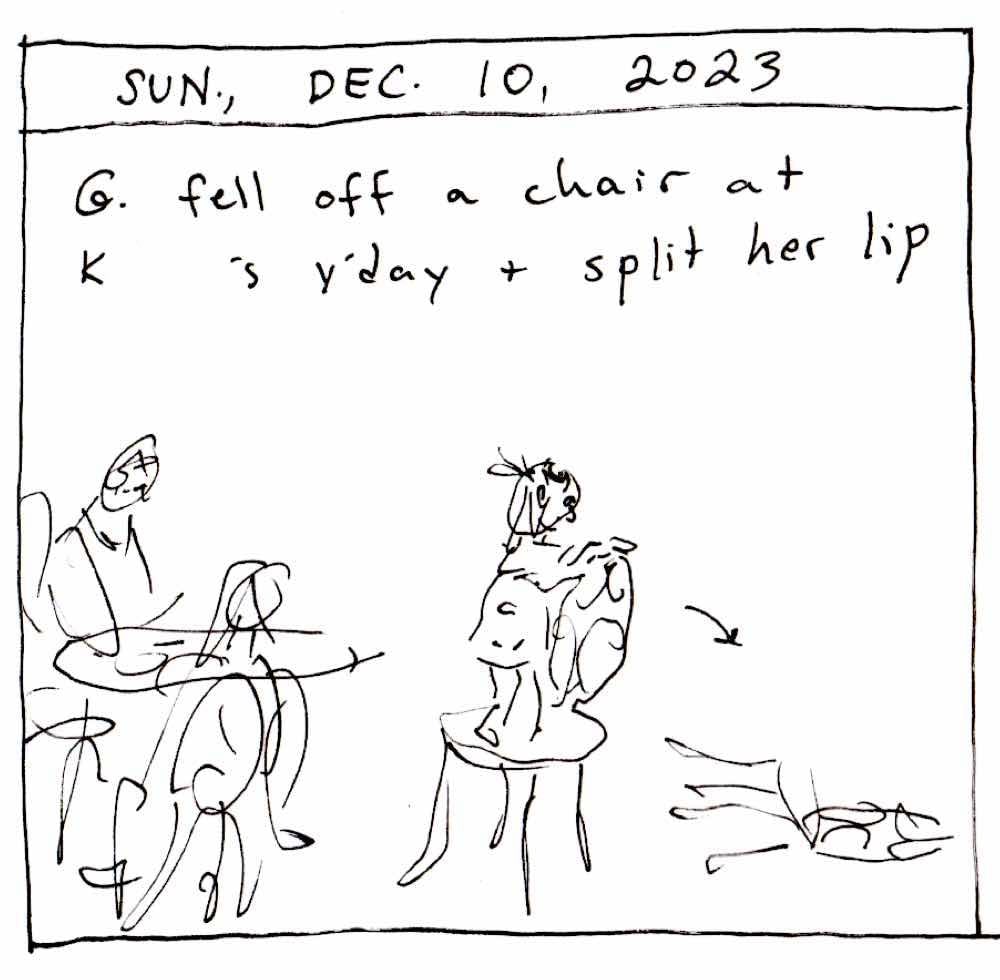


This site is made possible by member support. ❤️
Big thanks to Arcustech for hosting the site and offering amazing tech support.
When you buy through links on kottke.org, I may earn an affiliate commission. Thanks for supporting the site!
kottke.org. home of fine hypertext products since 1998.
Here are some more journal comics from this past December when I was guest-editing the site.



This is wonderful: a collection of video clips of Charles Schulz drawing his iconic Peanuts comic strip — “everything I could find of Charles Schulz drawing his Peanuts characters” in the words of the compiler.
Unfortunately, I’m not highly educated. I’m merely a high school graduate. I studied art in a correspondence course because I was afraid to go to art school. I couldn’t see myself sitting in a room where everyone else in the room could draw much better than I and this way I was protected by drawing at home and simply mailing my drawings in and having them criticized.
I wish I had a better education but I think that my entire background made me well-suited for what I do. If I could write better than I can, perhaps I would have tried to become a novelist and I might have become a failure. If I could draw better than I can, I might have tried to become an illustrator or an artist and would have failed there. But my entire being seems to be just right for being a cartoonist.
Charles Schulz: Unbothered. Moisturized. Happy. In his lane. Focused. Flourishing.
See also a 90-minute compilation of cartoonists working (from the same YT channel) and Chuck Jones demonstrating how to draw Bugs Bunny and other characters. (via open culture)
It’s another Thursday Afternoon With Edith, and here are a few more journal comics from back in December, when I was guest-editing this site and gearing up to have a baby!
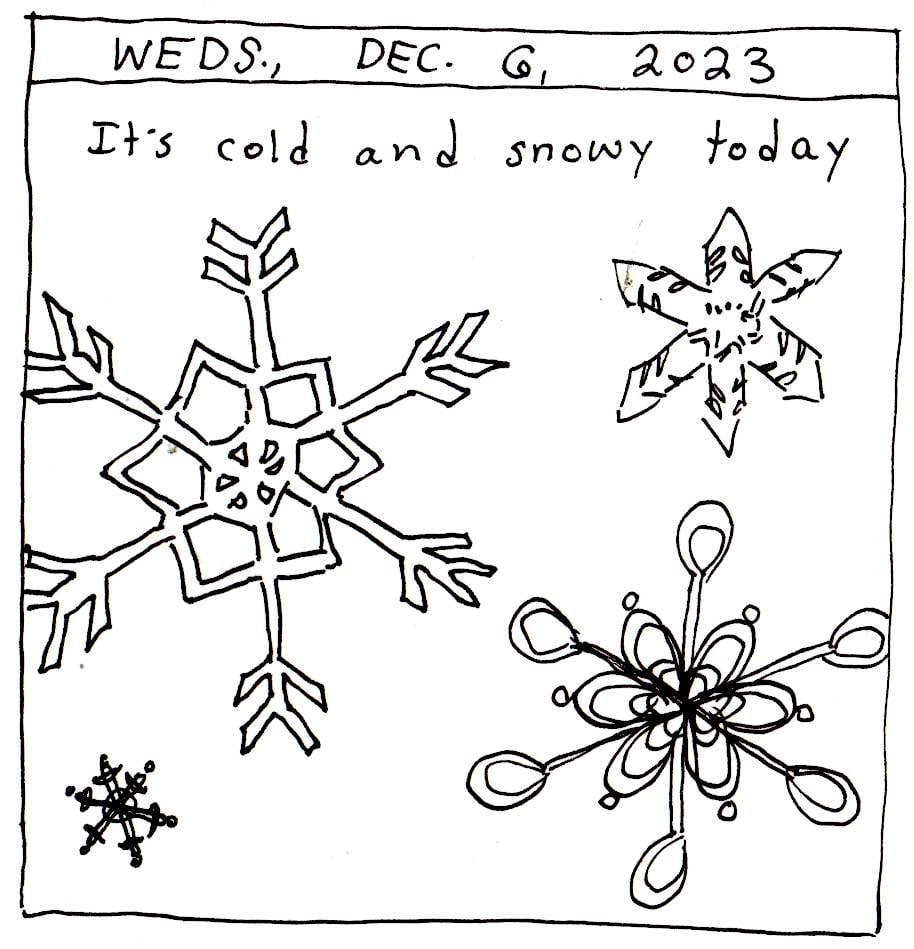



Here are some more comics from when I was guest-blogging here last fall! (Previously.) Should I be sharing these in a newsletter again? I don’t know, maybe so!
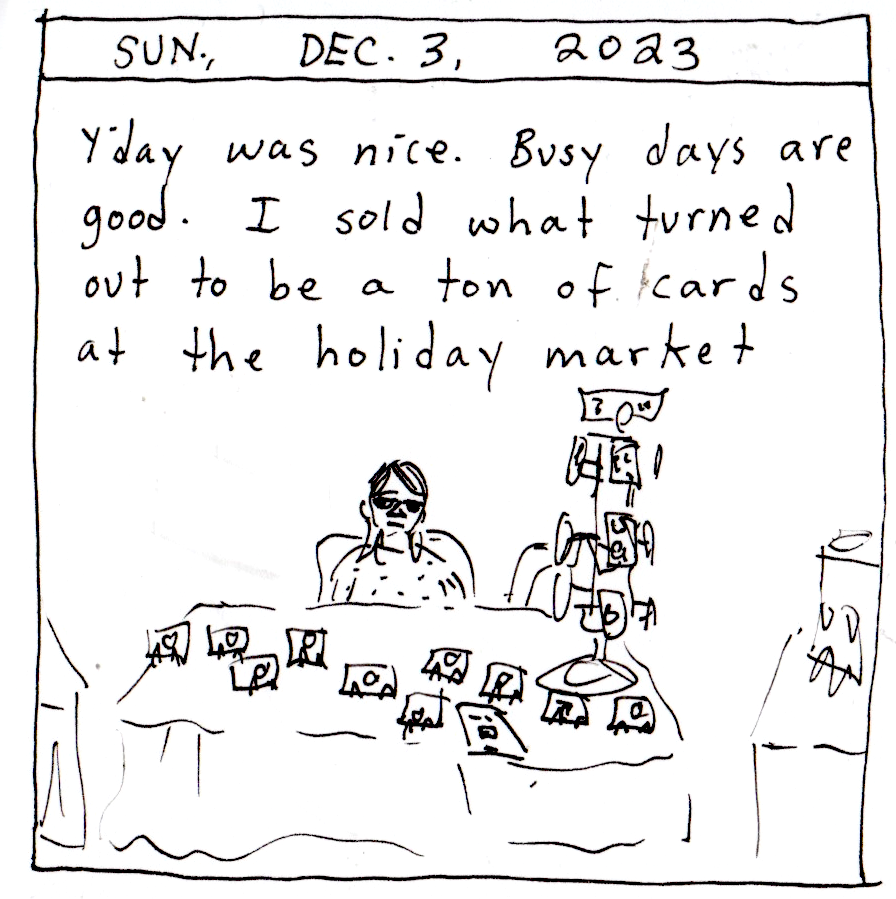
Entrepreneurial note: I sell cards on Etsy!



It’s another Thursday Afternoon With Edith, this time with a ton of journal comics because I feel emboldened by the new “show full post” option (thanks, Jason!), so I can hide things and not clutter up the homepage. These comics pick up from when I was guest-editing this site back in the fall.




It’s time for another Thursday Afternoon With Edith! I’m still sharing these journal comics. Here’s one from the day I started guest-editing here, back in the fall.

It’s Thursday Afternoons With Edith again! I’ll probably stop saying that after today. Here’s another installment of comics from my journal, from back around Thanksgiving. Jury is still out on whether this is a winning Kottke.org feature, but in the meantime I do enjoy sharing them.

Welcome to Thursday Afternoons With Edith™! This is when Jason leaves the blog to me while he works on longer-term projects for the site. I’m thinking I’ll share some of my day-in-the-life comics here at these times, unless/until it starts to seem like a bad idea. I shared some back in November when I was guest-editing, and I’m basically picking up where those left off. I still wish I could hide most of them behind a “read more” button, though!



Final installment of this sampling from my journal! I’m not sure if it was a success, but it was interesting for me. Thank you for humoring!


Some sketches of my daughter Georgia from her first few months. Forgive me! Made between Nov. 2021 and Jan. 2022.


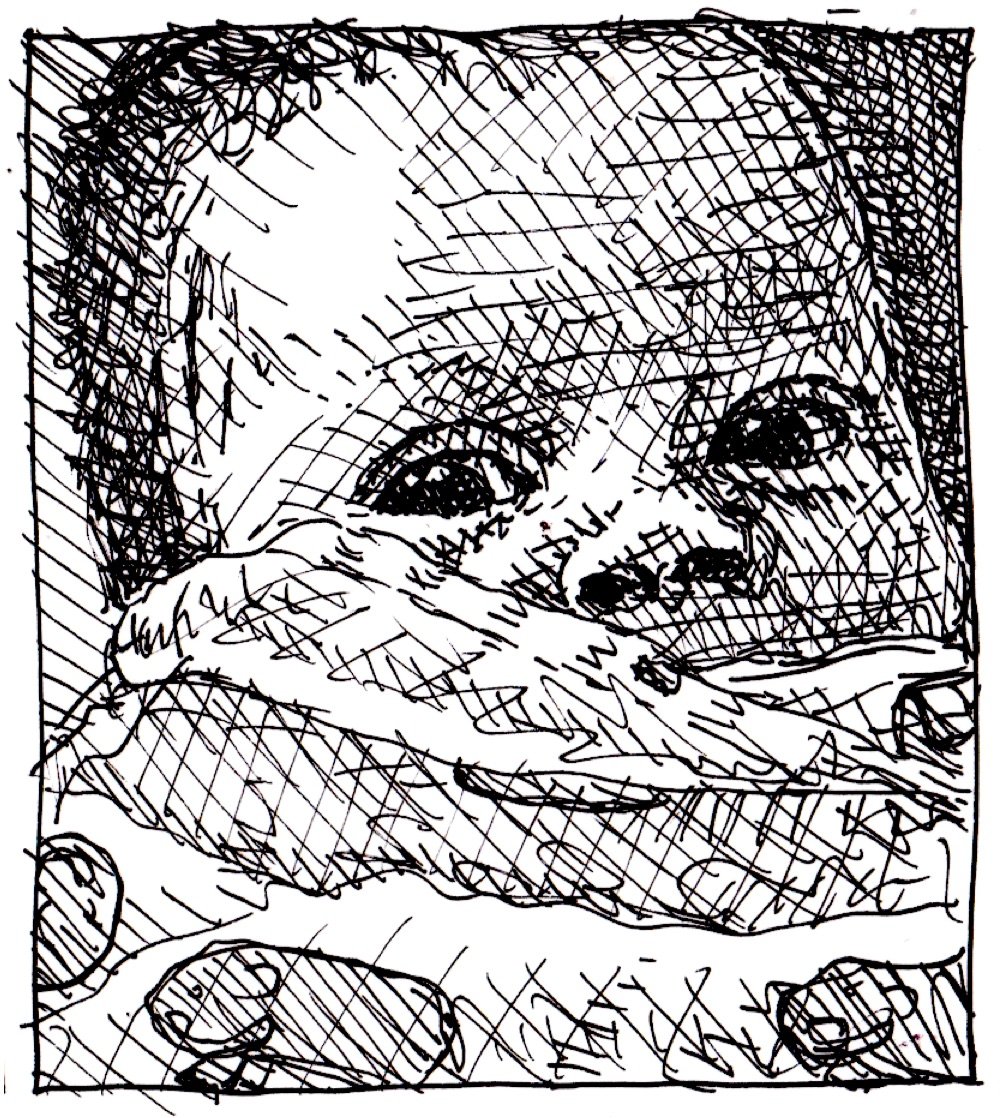
(Previously: Oct. 28 & 29, Oct. 30 & 31, Nov. 1 & 2, Nov. 3 & 4, Nov. 5 & 6, Nov. 7 & 8)

Nov. 8 was pure complaining, so I’m skipping that one. (Previously: Oct. 28 & 29, Oct. 30 & 31, Nov. 1 & 2, Nov. 3 & 4, Nov. 5 & 6)

Keeping on with this series… This one may be too much for one post, apologies! (Previously: Oct. 28 & 29, Oct. 30 & 31, Nov. 1 & 2, Nov. 3 & 4)


Note: Tooth discoloration turned out to be Goldfish buildup.

Some more day-in-the-life comics, with some coloring assists from my daughter.


Continuing on… I feel a little weird sharing these; I realize they may not be especially interesting. But, for now, more days in the life!


I’m enjoying sharing some of these more-recent comics on this site. This one basically picks up after yesterday’s left off. Maybe I will try to keep up a string of them until it’s time for me to go.


A journal entry from last month. I was hoping it would be more interesting, but I’m just going to keep throwing things up here and seeing what happens.


Hello, I’m Edith! I love this site, and I’m excited to be here. (Thanks, Jason!) I haven’t blogged like this for more than a decade, so I hope I’m not too rusty. Please feel free to email me any tips; I would be delighted to get them.
As Jason mentioned, since 2019 I’ve been sending a comics newsletter called Drawing Links, although it’s been on hiatus since last fall. However, I’m going to try running some old comics here – see below – in the hopes of working up momentum to bring my newsletter back. We’ll see how it goes!
More about me?? I’m originally from Cambridge, MA, and although I lived for 16 years in Brooklyn, a couple years ago my husband and I moved to a small town in upstate New York, not too far from Albany. We are now expecting our second daughter, due in a few weeks.
Thanks for reading!
…Okay, I was hoping to hide these comics behind a “read more” page-break button, but it seems Jason’s interface doesn’t have that option, so I guess I’ll be really taking over the main page.
And so, to kick this off, here is a little story about the first time I saw a bear (from 2022):

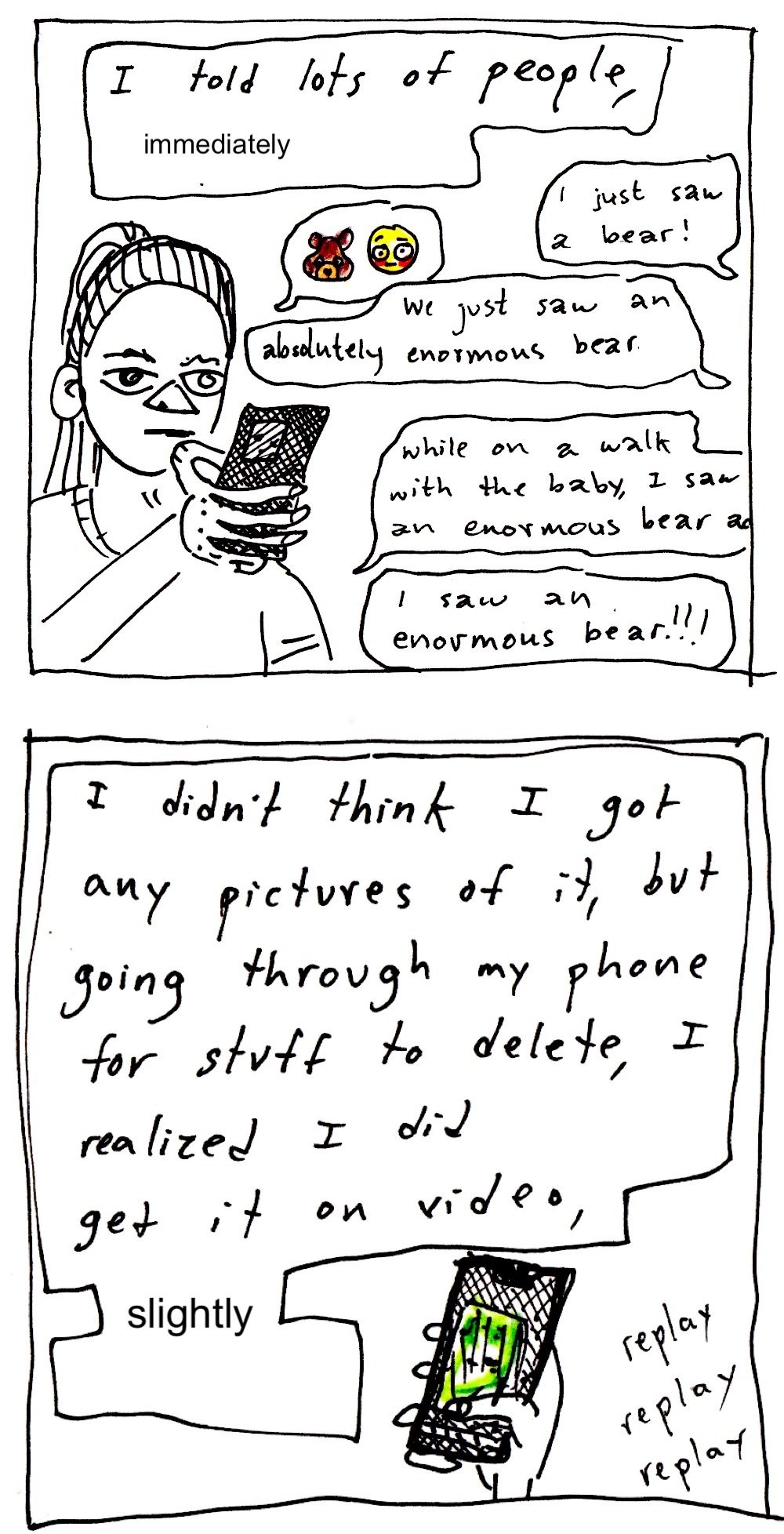

From XKCD, the progression of people’s opinions about cars & urban planning, from “I wish there wasn’t so much traffic to get into the city. They should put in more lanes.” to “Anything that makes a city a worse place to drive makes it a better place to live.” As The War on Cars said on Bluesky, “Randall Munroe, welcome to The War on Cars.”
P.S. Re: putting in more lanes, read up on induced demand and road dieting for why that’s often not a great idea.
This is apparently extremely old news (like almost 20 years old), but I ran across the cover that Chris Ware did for Voltaire’s Candide in the bookstore yesterday and it still slaps.
P.S. The book covers tag is pretty good if you want to get distracted/inspired by fantastic design for 30 minutes.
In the 60s and 70s, Howard Johnson’s was the largest restaurant chain in the US — the restaurants and their associated hotels were ubiquitous while travelling America’s roadways. So it made sense that when Stanley Kubrick needed a hospitality brand for the Earthlight Room on the space station circling Earth in 2001: A Space Odyssey, he reached for HoJo’s.
And of course, even in 1968, you had to do some sort of cross-promotion and, bizarrely, what Howard Johnson’s came up with was a 2001-themed children’s menu.
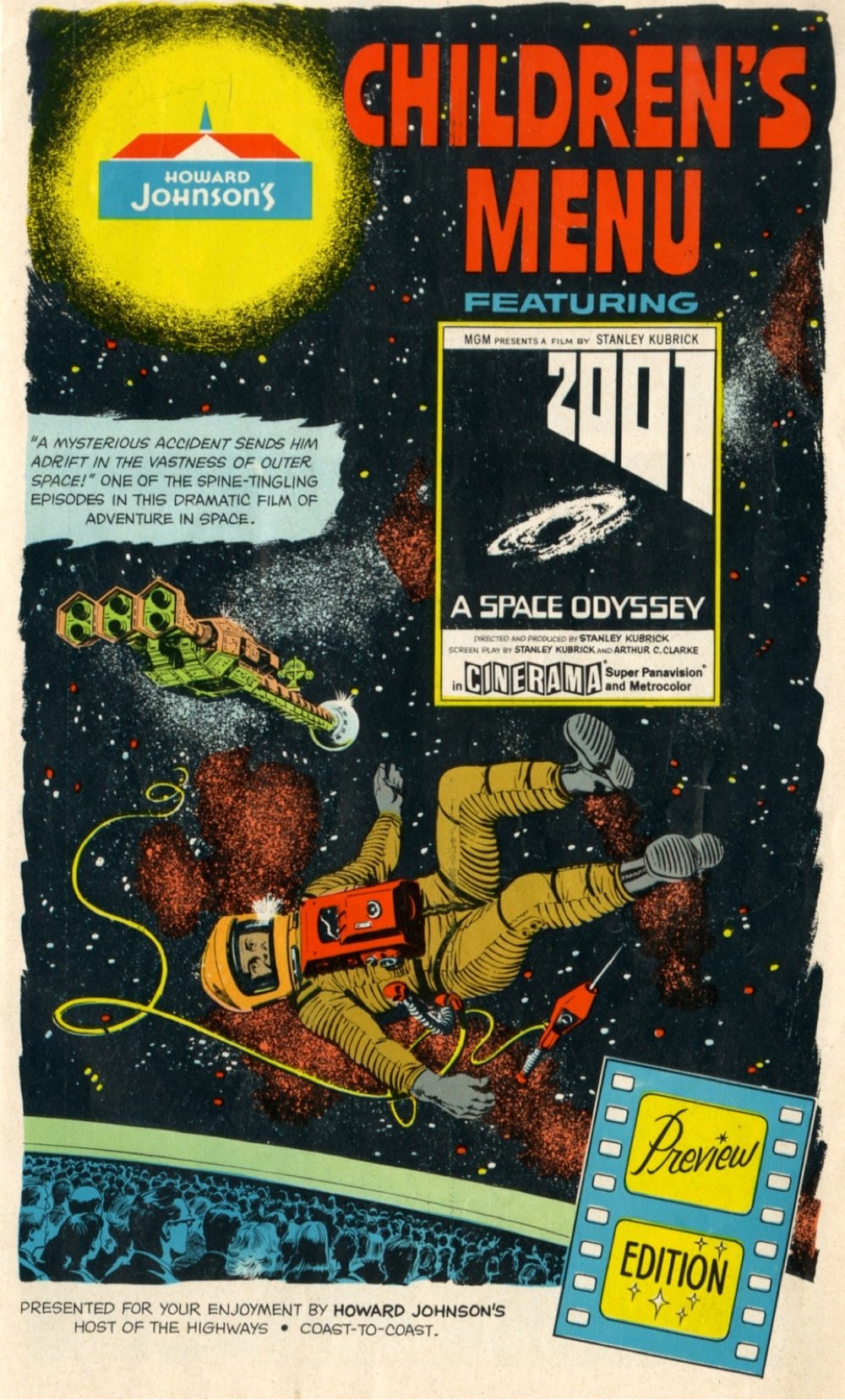
Even more weirdly, the menu is not about the movie itself, it’s about a family that goes to see the movie. The whole opening sequence with the apes is omitted entirely, as is the HAL 9000 (arguably the film’s main character) — I suspect the HoJo’s people didn’t get to see the entire movie while putting this together (as evidenced by the “preview edition” graphic in the bottom right corner of the menu’s cover).
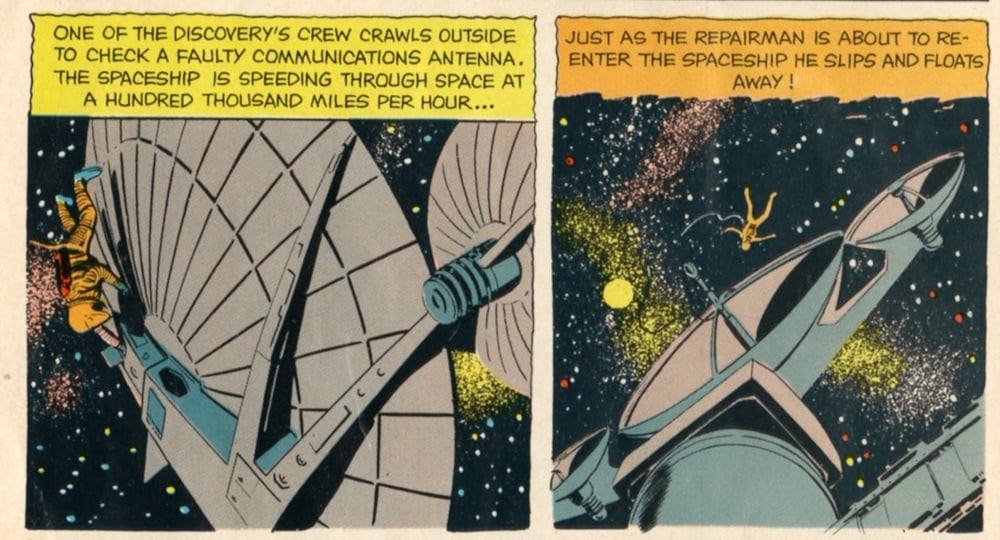
It’s cool to see scenes from the movie rendered in comics form:
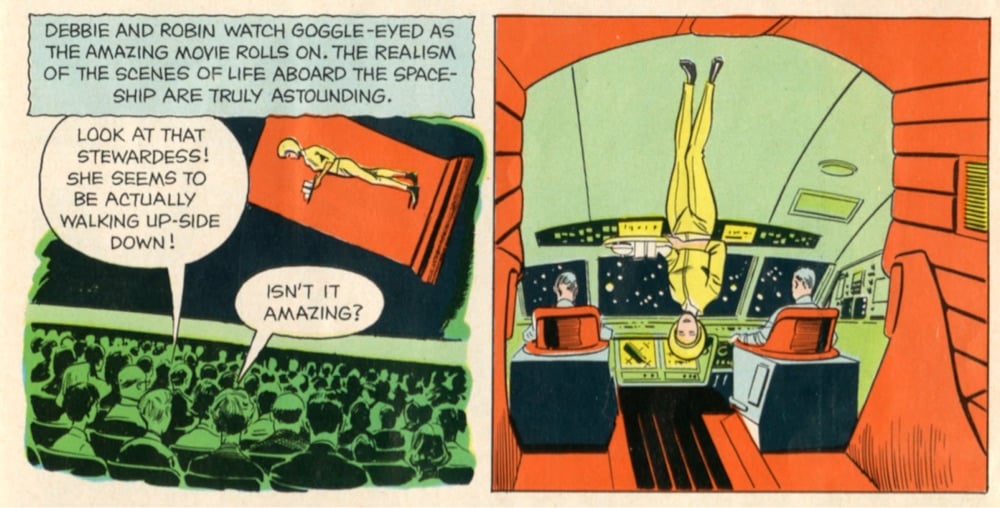
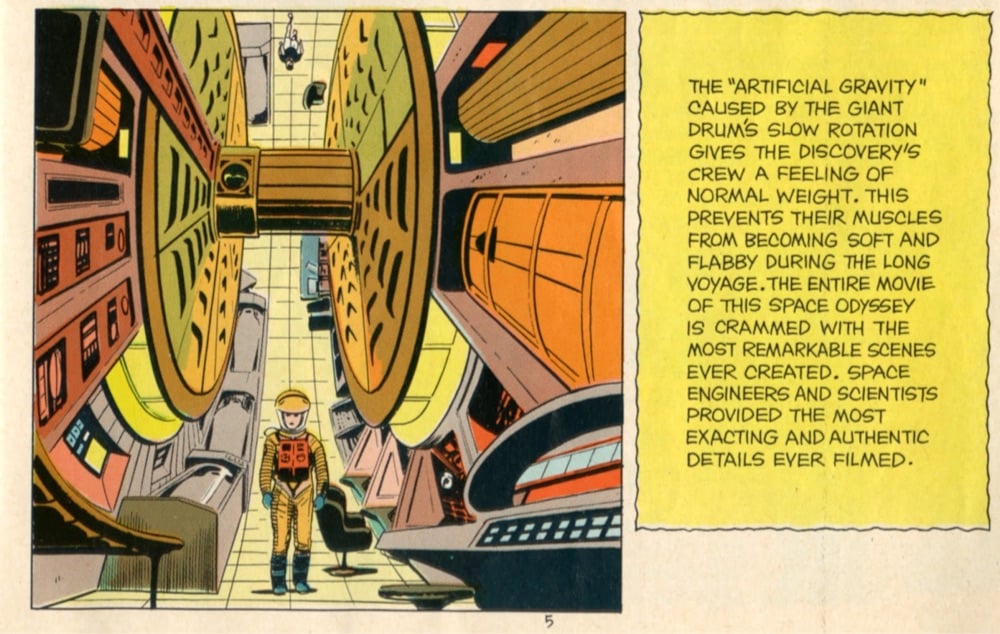
You can see the entire menu here, including the activity page — just click on one of the images to enter slideshow mode. (via meanwhile)
Update: Fun fact: The food on the 2001-themed kids menu would likely have been developed by Jacques Pépin and Pierre Franey, who were the head chefs at Howard Johnson’s. (via @EineKleine)
Stay Connected